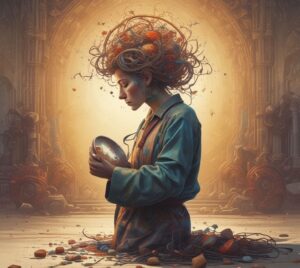Creativity is often seen as a mysterious force, something that strikes like lightning in a moment of inspiration. But beneath that seemingly magical process lies a complex web of cognitive functions that shape how we think, solve problems, and innovate. The psychology of creativity delves into these mental processes, revealing that creativity isn’t just about artistic talent or being a visionary—it’s about how our brains connect, synthesize, and reframe information in new and unexpected ways.
At the heart of creativity is divergent thinking. This is the ability to generate multiple, varied solutions to a single problem, breaking free from conventional patterns of thought. Instead of sticking to the tried and true, creative thinkers explore a wide range of possibilities, even those that might seem unconventional or outlandish. This type of thinking is often nurtured by environments that encourage open-mindedness and curiosity, where there’s no single “right” answer, but rather a spectrum of potential solutions.
Another key aspect of creativity is the brain’s ability to form new associations. Our minds are constantly making connections between ideas, experiences, and knowledge. The more diverse our experiences and the richer our knowledge base, the more potential connections we can form. This is why exposure to different cultures, disciplines, and ways of thinking can significantly enhance creativity. It’s also why creative breakthroughs often come from the cross-pollination of ideas from seemingly unrelated fields.
Problem-solving, a crucial element of creativity, involves both convergent and divergent thinking. While divergent thinking helps generate multiple possibilities, convergent thinking helps us zero in on the most effective solution. The interplay between these two types of thinking allows creative individuals to not only dream up new ideas but also to refine and implement them effectively.
Interestingly, the creative process is also deeply tied to emotion. Positive moods have been shown to broaden our thinking and make us more receptive to new ideas, while certain levels of stress can also spark creativity by pushing us to find novel solutions under pressure. This emotional aspect highlights that creativity isn’t just a cognitive process but an emotional one as well.
In essence, creativity is the result of a dynamic interplay between various cognitive processes—divergent thinking, associative thinking, problem-solving, and emotional regulation. Understanding these underlying mechanisms not only helps demystify the creative process but also provides us with tools to nurture and enhance our own creative potential.

